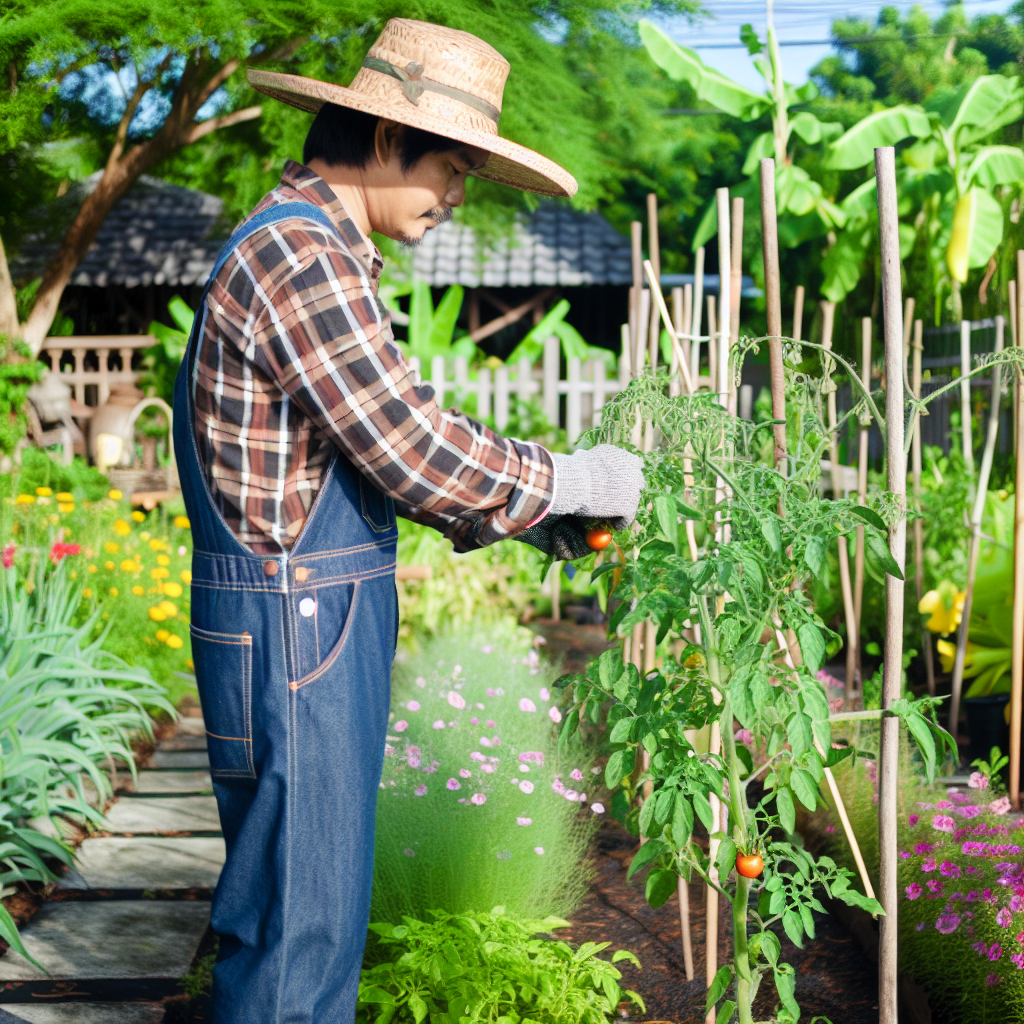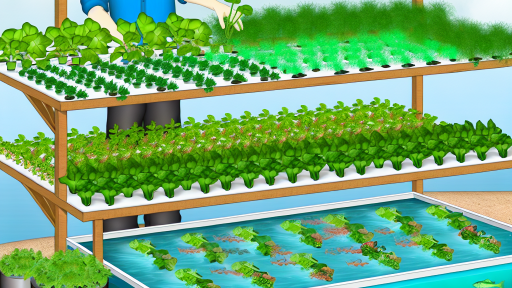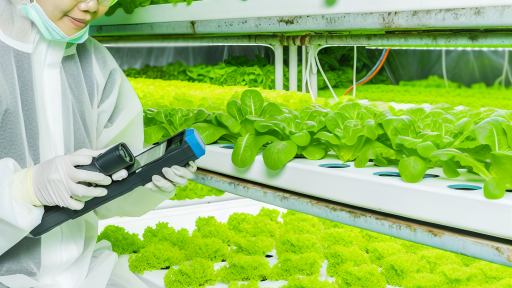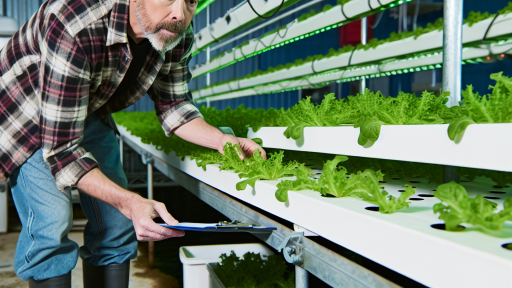Introduction to Container Farming
Definition of Container Farming
Container farming refers to growing plants in containers instead of traditional soil plots.
This method allows for gardening in limited spaces, making it highly versatile.
Containers can include pots, barrels, or even repurposed materials.
This approach is suitable for both urban and rural settings.
Benefits of Container Farming
Container farming offers numerous advantages for gardeners of all skill levels.
One primary benefit is space efficiency, allowing more crops in smaller areas.
This method also promotes enhanced control over soil conditions.
Moreover, gardeners can easily manage water drainage and nutrient levels.
Accessibility and Convenience
People with limited mobility greatly benefit from container farming.
Containers can be placed at convenient heights for easier access.
Additionally, they enable gardening in areas with poor soil quality.
This adaptability enhances the potential for high-yield gardens.
Crops Suitable for Container Farming
Almost any plant can thrive in containers with proper care.
Popular choices include herbs, flowers, and vegetables.
Vegetables like tomatoes, peppers, and lettuce perform exceptionally well.
Transform Your Agribusiness
Unlock your farm's potential with expert advice tailored to your needs. Get actionable steps that drive real results.
Get StartedChoosing the right size container also impacts plant health and yield.
Environmental Benefits
Container farming promotes sustainable practices and resource conservation.
This method often reduces the need for chemical fertilizers and pesticides.
Furthermore, it can lead to a decrease in water consumption.
Gardeners can implement drip irrigation systems for efficient watering.
Choosing the Right Containers
Types of Containers
Container gardening offers various options for plant growth.
Plastic containers are lightweight and versatile.
Wooden containers provide natural insulation for roots.
Ceramic pots add aesthetic appeal but can be heavy.
Metal containers, like galvanized steel, are durable and modern.
Each type serves a unique purpose based on your plant selection.
Sizes and Dimensions
Choosing the right size container is crucial for plant health.
Small containers work well for herbs and shallow-rooted plants.
Medium containers can support mid-sized vegetables like peppers.
Large containers are suitable for larger plants like tomatoes.
Ensure containers have adequate drainage holes to prevent root rot.
Materials and Their Benefits
Different materials offer various advantages for container gardening.
Plastic is often affordable and available in various colors and sizes.
Wood is biodegradable and blends well with outdoor surroundings.
Ceramic can retain moisture, reducing the need for frequent watering.
Metal containers can reflect heat, helping warm-season plants thrive.
Consider the local climate when selecting container materials.
Choosing Based on Plant Types
Your choice of container should match the type of plants you plan to grow.
Herbs typically thrive in smaller, shallow containers.
Showcase Your Farming Business
Publish your professional farming services profile on our blog for a one-time fee of $200 and reach a dedicated audience of farmers and agribusiness owners.
Publish Your ProfileFruits and vegetables need larger containers to accommodate their roots.
Flowering plants can adapt to a range of container sizes.
Check specific planting requirements for best results.
Balancing Aesthetics and Functionality
Functionality should guide your container choice, but aesthetics matter too.
Consider how the container fits into your overall garden design.
Color and texture can enhance the beauty of your garden space.
Choose containers that reflect your personal style while serving their purpose.
Ultimately, striking a balance between form and function enhances your gardening experience.
Soil Selection and Preparation for Optimal Growth
Choosing the Right Soil
Selecting the right soil is essential for container farming.
It impacts the nutrient availability and drainage properties.
Consider using a high-quality potting mix designed for container gardens.
This mix typically contains a balance of organic matter and drainage materials.
Additionally, look for products with added fertilizers to support plant growth.
Avoid using garden soil, as it’s often too dense for containers.
Understanding Soil Types
Different soil types have unique properties.
Sandy soils drain quickly but may require more frequent watering.
Clay soils retain moisture but can lead to root rot in containers.
Loamy soils offer a balanced combination of both drainage and retention.
Ultimately, your choice will depend on the specific plants you wish to grow.
Preparing the Soil for Planting
Preparation ensures your plants thrive in their containers.
Start by mixing your chosen potting mix with organic compost.
This enhances nutrient content and improves soil structure.
Next, ensure the soil is damp but not overly wet before planting.
Mix in slow-release fertilizers to provide nutrients over time.
Testing Soil pH
Soil pH plays a critical role in nutrient uptake.
Most plants prefer a pH between 6.0 and 7.0.
You can easily test your soil’s pH with a simple testing kit.
If necessary, amend the soil with lime to raise pH or sulfur to lower it.
This adjustment helps achieve optimal growth conditions for your plants.
Enhancing Soil Drainage
Good drainage prevents waterlogged conditions that harm roots.
Add perlite, vermiculite, or coarse sand to your potting mix for better drainage.
Additionally, make sure your containers have adequate drainage holes.
Improper drainage can lead to diseases and poor plant health.
Maintenance of Soil Health
Maintaining soil health is ongoing work.
Regularly check for pests and diseases that can affect soil quality.
Rotate your plants each season to avoid nutrient depletion.
Lastly, consider top dressing with compost or mulch annually.
This practice enriches the soil and supports beneficial microorganisms.
Delve into the Subject: Micro-Farming in Urban Spaces: Turning Tiny Plots into Productive Farms
Best Practices for Watering Container Gardens
Understanding Water Requirements
Container gardens have unique watering needs compared to traditional gardens.
Showcase Your Farming Business
Publish your professional farming services profile on our blog for a one-time fee of $200 and reach a dedicated audience of farmers and agribusiness owners.
Publish Your ProfileThe soil in containers dries out more quickly due to limited space and exposure.
Monitoring moisture levels frequently helps prevent under- or over-watering.
Choosing the Right Soil
A well-draining soil mix promotes healthy roots in container gardens.
Opt for potting soil that retains moisture while allowing excess water to escape.
Consider mixes that include organic matter like compost for better nutrient retention.
Implementing Effective Watering Techniques
Water plants at the base to deliver moisture directly to the roots.
Using a soaker hose or drip irrigation simplifies the watering process.
Watering early in the morning reduces evaporation and fungal diseases.
Recognizing Signs of Water Stress
Monitor for drooping leaves, which indicate the need for water.
Yellowing leaves can signal both over-watering and under-watering issues.
Adjust your watering schedule based on weather conditions and plant needs.
Utilizing Mulch for Moisture Retention
Applying a layer of mulch conserves moisture in container gardens.
Organic mulches, such as straw or wood chips, also improve soil quality as they decompose.
Mulch helps regulate soil temperature, benefiting plant growth.
Automating Watering Systems
Consider an automated watering system if you travel often.
Drip irrigation systems provide a consistent and efficient water supply.
Timers can help manage watering schedules easily.
Gain More Insights: Urban Homesteading: Growing Your Own Food in Limited Spaces
Nutrient Management: Fertilizers and Organic Solutions
Understanding Nutrient Requirements
Plants require essential nutrients for optimal growth.
Nutrients include nitrogen, phosphorus, potassium, and micronutrients.
Each plant species has specific nutrient needs.
Understanding these needs improves crop yield and health.
Types of Fertilizers
Fertilizers can be broadly categorized into two types: synthetic and organic.
Synthetic fertilizers provide immediate nutrient availability.
However, organic fertilizers enhance long-term soil health.
Combining both can yield excellent results.
Benefits of Organic Solutions
Organic solutions improve soil structure and fertility.
They promote beneficial microbial activity in the soil.
This activity helps plants absorb nutrients more efficiently.
Additionally, organic methods reduce environmental impact.
Implementing Fertilizer Strategies
Developing a fertilization plan is crucial for success.
Start with a soil test to determine existing nutrient levels.
This information guides your choice of fertilizers.
Regularly monitor plant health and adjust as needed.
Common Organic Fertilizers
- Compost enriches soil with nutrients and microorganisms.
- Well-rotted manure adds organic matter and nutrients.
- Fish emulsion provides immediate nutrient release.
- Bone meal is an excellent source of phosphorus.
Tips for Successful Nutrient Management
Apply fertilizers at the right time for maximum effectiveness.
It’s crucial to avoid over-fertilization, which can harm plants.
Use slow-release fertilizers for extended nutrient availability.
Finally, practice crop rotation to maintain soil fertility.
See Related Content: 7 Must-Try Techniques for Efficient Small-Scale Organic Farming
Top Crops for Container Farming
Introduction to Container Farming
Container farming offers flexibility and efficiency in gardening.
Showcase Your Farming Business
Publish your professional farming services profile on our blog for a one-time fee of $200 and reach a dedicated audience of farmers and agribusiness owners.
Publish Your ProfileUrban locations benefit significantly from this method.
High-yield crops thrive even in limited space.
Vegetables for Container Farming
Many vegetables perform exceptionally well in containers.
Consider growing tomatoes as they yield abundantly.
Cherry tomatoes are especially suited for small spaces.
They produce fruit quickly and require minimal maintenance.
Next, grow peppers for a vibrant and productive garden.
Both sweet and hot varieties adapt well to container life.
Additionally, leafy greens like spinach and lettuce are excellent choices.
These crops grow rapidly and can be harvested repeatedly.
Moreover, they thrive in cooler temperatures.
Herbs to Consider
Herbs are perfect companions in container gardens.
They require little space yet offer significant flavor enhancements.
Basil and parsley are two of the most popular choices.
Thyme and rosemary are also robust, drought-tolerant options.
These herbs flourish throughout the growing season.
Fruits That Shine in Containers
Fruit bushes and dwarf trees are ideal for container farming.
Strawberries can produce abundant fruit in limited space.
They are particularly attractive and flavorful.
In addition, consider growing dwarf citrus trees.
Varieties like lemons or limes thrive in containers.
These trees can also serve as decorative elements.
Maximizing Your Container Garden
Choose the right potting mix to ensure successful growth.
Look for high-quality, well-draining soil options.
Moreover, ensure containers have adequate drainage holes.
Regular feeding with a balanced fertilizer boosts productivity.
Additionally, place containers in sunny locations for the best results.
Most vegetables require at least six hours of sun.
Learn More: Small-Scale Farming Tips for a Thriving Garden

Pest and Disease Management in Container Environments
Understanding Common Pests
Container gardening presents unique pest challenges.
Common pests include aphids, spider mites, and whiteflies.
These pests thrive in warm, sheltered environments.
Regularly inspect your plants for early signs of infestation.
Effective Pest Control Strategies
Integrating pest control methods enhances your garden’s health.
Natural remedies, such as neem oil, can deter many pests.
Insecticidal soaps effectively target soft-bodied insects.
Introduce beneficial insects like ladybugs to control pests naturally.
Additionally, maintaining good hygiene promotes pest prevention.
Recognizing Plant Diseases
Diseases can spread quickly in container gardens.
Common diseases include powdery mildew and root rot.
Showcase Your Farming Business
Publish your professional farming services profile on our blog for a one-time fee of $200 and reach a dedicated audience of farmers and agribusiness owners.
Publish Your ProfileMonitor leaves for discoloration and unusual spots.
Check for wilting, which may indicate root issues.
Preventive Measures Against Diseases
Preventative measures are vital in disease management.
Choose disease-resistant plant varieties whenever possible.
Provide adequate spacing for air circulation among plants.
Ensure proper drainage in your containers to prevent rot.
Furthermore, avoid overhead watering to minimize leaf wetness.
Promoting Plant Health
Healthy plants resist pests and diseases more effectively.
Regular feeding with organic fertilizers strengthens plant growth.
Maintain a consistent watering schedule to avoid stress.
Finally, ensure your plants receive the right amount of sunlight.
Seasonal Considerations: Planting & Harvesting Timelines
Understanding Seasonal Cycles
Each season brings unique opportunities for gardening.
Understanding seasonal cycles enhances your ability to grow a variety of plants.
Spring is typically the best time to start many crops.
In contrast, late summer is perfect for planting fall varieties.
Planting Timelines
Planning your planting timeline is crucial for maximizing yield.
Start by considering the frost dates for your area.
For instance, plant tomatoes after the last expected frost.
Likewise, cool-season crops can be sown early in spring.
Succession planting can extend your harvest throughout the season.
Use staggered sowing to ensure a continuous crop yield.
Ideal Harvest Windows
Knowing when to harvest is just as important as when to plant.
Each crop has specific indicators for peak ripeness.
For example, harvest leafy greens when they are tender and young.
Fruiting plants should be picked when fully colored and firm.
Plan your harvests to avoid overwhelming yourself with production.
Adapting to Climate Variability
Climate change impacts growing seasons and plant choices.
Stay informed about local weather patterns to adjust your planting.
Consider growing heat-resistant or drought-tolerant plants.
These varieties adapt better to changing climate conditions.
Using Technology to Optimize Timing
Modern technology offers helpful tools for gardening.
Smart gardening apps provide planting calendars tailored to your zone.
Weather apps can alert you to frosts or heat waves.
Utilize these tools to refine your planting and harvesting strategies.
Innovative Techniques: Vertical Gardening and Hydroponics in Containers
Vertical Gardening
Vertical gardening maximizes limited space effectively.
This technique allows plants to grow upward rather than outward.
As a result, gardeners can cultivate in smaller areas.
Additionally, it enhances air circulation around plants.
Using trellises, shelves, or wall planters can create stunning displays.
Moreover, vertical gardens increase accessibility to plants for maintenance.
Showcase Your Farming Business
Publish your professional farming services profile on our blog for a one-time fee of $200 and reach a dedicated audience of farmers and agribusiness owners.
Publish Your ProfileConsider utilizing various plant types for diverse aesthetics.
Herbs, flowers, and even vegetables thrive in vertical setups.
Benefits of Vertical Gardening
Vertical gardening offers several significant benefits.
- Space efficiency is a major advantage.
- It can improve the overall garden landscape.
- This technique helps reduce pest problems.
Additionally, it allows for better sun exposure.
Plants can receive more light for healthier growth.
Hydroponics in Containers
Hydroponics is a soilless growing method that enhances yield.
This technique uses nutrient-rich water to nourish plants.
Container hydroponics is particularly versatile.
You can set up systems indoors or outdoors based on preference.
This method eliminates soil-borne pests and diseases.
As a result, plants can enjoy healthier growing conditions.
Types of Hydroponic Systems
There are several common hydroponic systems you can explore.
- Nutrient Film Technique (NFT) is efficient for small spaces.
- Deep Water Culture (DWC) promotes robust root development.
- Drip systems provide precise nutrient delivery.
Each system has unique advantages depending on your needs.
Generally, hydroponics can yield faster crop growth.
Combining Techniques
Combining vertical gardening with hydroponics maximizes benefits.
This strategy enhances both yield and space efficiency.
For instance, a vertical hydroponic garden can produce abundant crops.
It’s also visually appealing while being functional.
Experiment with different plants to discover what works best.
The Future of Urban Agriculture through Container Gardening
Adapting to Urban Spaces
Container gardening transforms underutilized spaces into productive gardens.
It allows urban dwellers to cultivate fresh produce in limited areas.
Moreover, it accommodates various settings such as balconies, rooftops, and patios.
This adaptability promotes sustainability in busy city environments.
Enhancing Food Security
As urban populations grow, food security becomes a pressing issue.
Container gardens provide a reliable source of nutritious food.
They empower individuals to grow their own food, reducing dependence on markets.
This practice contributes to community resilience against food shortages.
Building Community Connections
Container gardening encourages social interactions among neighbors.
Community gardens foster relationships and collaboration among residents.
Additionally, they enhance local biodiversity by attracting pollinators.
Such connections enrich urban neighborhoods, creating a sense of belonging.
Promoting Mental Wellness
Gardening serves as a therapeutic outlet for many individuals.
Engaging with plants reduces stress and improves mental health.
Container gardening offers accessible opportunities for relaxation and creativity.
It provides a peaceful escape from the busy urban lifestyle.
Looking to the Future
The rise of urban container gardening reshapes city landscapes.
Innovative practices and technologies will further enhance this movement.
As cities prioritize green initiatives, container gardening will play a crucial role.
Ultimately, it contributes to a sustainable and resilient urban future.
Additional Resources
New Resources: Home Composting & Container Gardening Tips …
Showcase Your Farming Business
Publish your professional farming services profile on our blog for a one-time fee of $200 and reach a dedicated audience of farmers and agribusiness owners.
Publish Your ProfileGardening in Grow Bags | Answers to All Your Questions …




